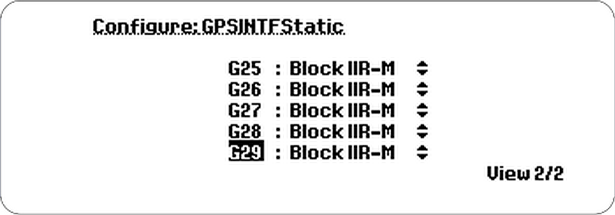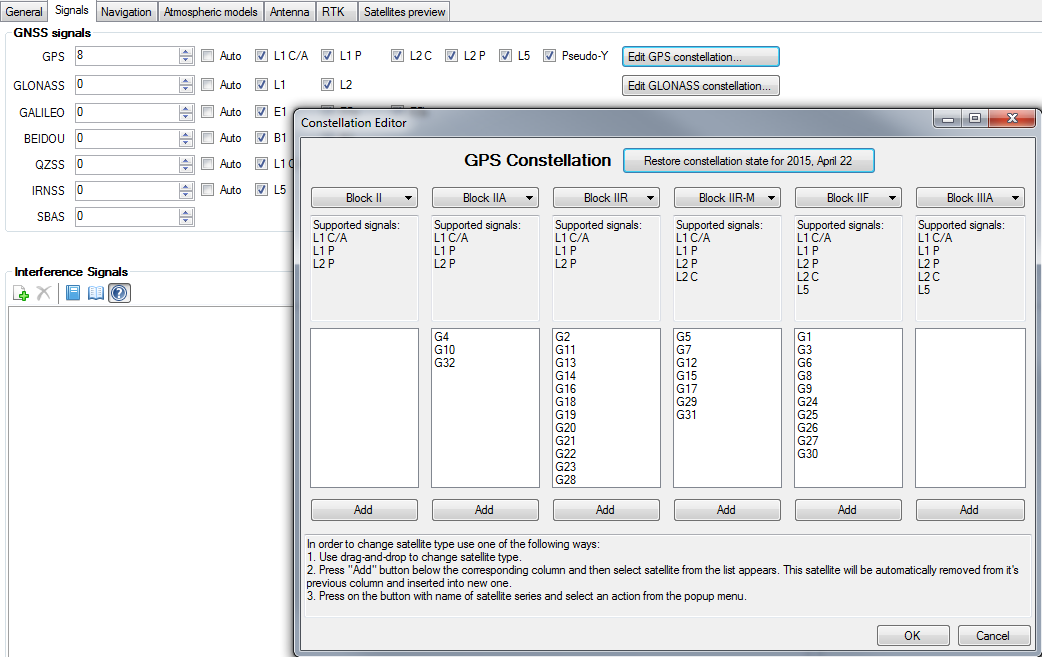Satellite Constellations
Once existing GNSS satellites of a satellite system in orbit are being replaced by new, more modern satellite types, the satellites are often categorized by their generation, or historic constellation. In the case of the GPS system, these constellations are named by their block numbers, e.g., "IIA".
Note: The functionality described below only applies to GPS and Glonass. Other installed satellite systems, such as Galileo, still have their first generation of satellites in orbit.
GSG offers three options to configure satellite constellations:
- The Default setting refers to the constellation state for April 22, 2015.
- Constellation-wide setting of the satellite generation, e.g., by setting all GPS satellites to Block IIR-M:
- Navigate to Select > [Select Scenario] > Configure Scenario: View 3/3
- Next to the desired Satellite System enter a number of satellites greater than "0", or Auto (see Number of Satellites), and press Enter to open the first configuration view, then the RIGHT arrow key to open View 2/2.
- Explicitly specify the constellation for each individual satellite, using GSG StudioView:

Assigning one constellation block to all satellites
To access this configuration view:
Note: The G## numbers refer to the individual GPS satellites (Glonass satellites are named R##).

GPS Constellation configuration (StudioView)
This functionality may be required for the configuration of scenarios taking place in the past, or 'What-if' scenarios.
Consider the following when configuring satellite constellations:
- The selected satellite constellation will impact the navigation message to mimic the type of simulated satellite.
- The satellite type will also impact the types of RF signals generated (see Frequency Bands and Signal De-/Activation), i.e. for the signal type L2C to be transmitted, the satellite type must be Block IIR-M (or higher), for L5 to be transmitted, the satellite type must be of type Block IIF (or higher), etc.
Possible settings are:
- II
- IIA
- IIR
- Block IIR-M
- IIF
- (default)
- Glonass-K1
- Glonass-M
- (default)